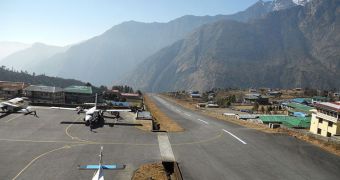The US Federal Aviation Administration (FAA) is calling for new safety protocols, aimed at preventing instances of midair collisions. Currently, 10 to 12 small aircraft are involved in such events yearly, and the agency wants to put an end to this trend.
They way it plans to go about doing this is to create a new and improved algorithm, that would track the position of all commercial aircraft and small airplanes flying on or around large airports.
Each of the these machines would feature a GPS broadcast device, which would relay their position to the control tower with more efficiency than possible today. Current systems use ground radars to keep track of aircraft.
By 2020, the FAA wants the new algorithm to be implemented across the United States. A group of experts at the Massachusetts Institute of Technology (MIT) has been tasked with figuring out the limitations and capabilities of the proposed tracking system.
The early results of that study will be presented in October 2011, at the 30th Digital Avionics Systems Conference, which will be held in Seattle, Washington. The algorithm the MIT group is studying is meant to calculate airplane trajectories.
Based on these data, the systems will be able to predict when two small airplanes will enter a collision course, or engage in dangerous maneuvers. Statistics show that more than 112 planes have suffered midair collisions since 2001.
Additionally, there have been thousands of reported instances of near-hits, where the aircraft passed extremely close to each other, avoiding impact at the last possible moment. With the new algorithm, such scenarios may become a thing of the past.
One of the main challenges experts are faced with is developing the algorithm in such a way that it does not produce to many false-positive results, reports MIT International Center for Air Transportation postdoctoral student Maxime Gariel.
“If half the time it’s a false alert, [people] are not going to listen to it, or they’ll turn it off,” the expert explains. On the other hand, reducing the system's sensitivity might still result in collisions.
“One of the key things that we want to provide as part of this system is additional value to the general-aviation [small-plane] pilot. We hope it adds value and tips the scale in the direction of saying, ‘Yes, this is something that I want',” explains David Gray.
He is the FAA lead on the new project, and is coordinating with the MIT team that is testing the algorithms.

 14 DAY TRIAL //
14 DAY TRIAL //